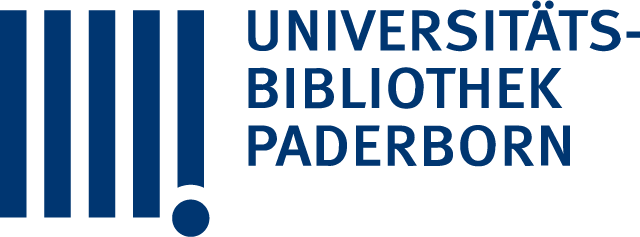Titelaufnahme
Titelaufnahme
- TitelPrädiktive Instandhaltung von elektromechanischen Relais mit Methoden der künstlichen Intelligenz / Fabian Winkel
- Autor
- Gutachter
- Erschienen
- Umfang1 Online-Ressource (vii, 176 Seiten) Illustrationen, Diagramme
- HochschulschriftUniversität Paderborn, Dissertation, 2024
- AnmerkungTag der Verteidigung: 16.12.2024
- Verteidigung2024-12-16
- SpracheDeutsch
- DokumenttypDissertation
- Schlagwörter (GND)
- URN
- DOI
Links
- Social MediaShare
- Nachweis
- IIIF
Dateien
Klassifikation
Zusammenfassung
Elektromechanische Relais sind integraler Bestandteil von diversen Anwendungen: von Haushaltsgeräten über Kraftfahrzeuge bis zu komplexen industriellen Anlagen. Dies ist auf ihre Vorteile, wie einem geringen Kontaktwiderstand, der galvanischen Trennung und niedrigen Kosten zurückzuführen. Ein wesentlicher Nachteil ist der Verschleiß von Relais. Deshalb werden im Kontext dieser Arbeit drei Themengebiete zur Instandhaltung von elektromechanischen Relais betrachtet:• Im Kontext von „Predictive Maintenance“ (dt. Prädiktive Instandhaltung) (PdM) soll der Zustand von Relais geschätzt werden, damit diese vor einen drohenden Ausfall gewechselt werden können. Der Stand der Technik kann nicht auf Relais übertragen werden, weil dieser größtenteils aus Forschungsvorhaben hervorgeht, die sich mit monoton degradierenden Bauteilen beschäftigten. Im Gegensatz dazu ist die Degradierung von Relais deutlich komplexer. Deshalb wird im Rahmen dieser Arbeit das Verfahren „Maintenance-Algorithm for Unlabeled Data“ (dt. Instand- haltungsalgorithmus für ungelabelte Daten) (MAUD) vorgestellt, mit dem mittels Pseudo-Labeling ein drohender Ausfall identifiziert werden kann. Im Vergleich zum Stand der Technik erreicht MAUD eine 61 % höhere Betriebsdauer bei gleichzeitiger Reduktion der Ausfälle 70 %. Aufgrund des Praxisbezugs wird darüber hinaus die Implementierung von MAUD auf einem Mikrocontroller untersucht.• Die Lebensdauer von Relais kann durch Reduktion des Prellens verlängert werden. Dafür ist eine Manipulation des Steuersignals notwendig, die durch zwei Parameter definiert wird. Die Herausforderung besteht darin, beide Parameter während des Betriebs zu optimieren. Der in dieser Arbeit vorgestellte „Bouncing-Optimization- Algorithm“ (dt. Prelloptimierungsalgorithmus) (BOA) nutzt hierzu eine Variante der Partikelschwarmoptimierung. Im Rahmen der Evaluierung wird gezeigt, dass BOA das Prellen um 79 % beim Einschalten (59 % beim Ausschalten) erreicht.• Ein Ausfall kann oft durch erneutes Schalten korrigiert werden und Degradierung kann reversibel sein. Bei dem Verfahren „Contact Self-healing via Abrasion“ (dt. Kontaktselbstheilung via Abrasion) (CSA) werden diese Aspekte automatisiert ausgenutzt, um die Folgen eines Ausfalls zu minimieren. Das Potential von CSA wird durch Untersuchungen aufgezeigt, so konnten bspw. 75 % Testrelais geheilt werden.Somit wird dem Verschleiß von Relais auf drei Weisen begegnet: Mit MAUD wird das Auftreten von Ausfällen reduziert. Falls es trotzdem zu einem Ausfall kommt, können die Folgen durch CSA minimiert werden. Schlussendlich ermöglicht BOA die Verlängerung der Lebenssdauer.
Abstract
Electromechanical relays are an integral part of various applications: from household appliances to motor vehicles and complex industrial systems. This is due to their advantages, such as low contact resistance, galvanic isolation and low cost. A major disadvantage is the wear of relays. Therefore, in the context of this work, three areas of maintenance of electromechanical relays are considered:• In the context of „Predictive Maintenance“ (dt. Prädiktive Instandhaltung) (PdM), the status of relays should be estimated so that they can be replaced before an imminent failure. The state of the art cannot be applied to relays because it is largely derived from research projects dealing with monotonically degrading components. In contrast, the degradation of relays is much more complex. For this reason, the„Maintenance-Algorithm for Unlabeled Data“ (dt. Instandhaltungsalgorithmus für ungelabelte Daten) (MAUD) is presented in this thesis, with which an impending failure can be identified by means of Pseudo-Labeling. Compared to the state of the art, MAUD achieves a 61 % higher operating time with a simultaneous reduction in failures of 70 %. Due to the practical relevance, the implementation of MAUD on a microcontroller is also investigated.• The lifetime of relays can be extended by reducing the bounce. This requires mani- pulation of the control signal, which is defined by two parameters. The challenge is to optimize both parameters during operation. The „Bouncing-Optimization- Algorithm“ (dt. Prelloptimierungsalgorithmus) (BOA) presented in this thesis uses a variant of particle swarm optimization for this purpose. As part of the evaluation, it is shown that BOA achieves a bounce of 79% when switching on (59% when switching off).• A failure can often be corrected by switching again and degradation can be reversible. In the „Contact Self-healing via Abrasion“ (dt. Kontaktselbstheilung via Abrasion) (CSA) process, these aspects are automatically exploited to minimize the consequen- ces of a failure. The potential of CSA is demonstrated by studies, for example 75 % test relays could be healed.Relay wear is thus countered in three ways: The occurrence of failures is reduced with MAUD. If a failure does occur, the consequences can be minimized by CSA. Finally, BOA enables the lifetime to be extended.
Inhalt
Statistik
- Das PDF-Dokument wurde 19 mal heruntergeladen.


